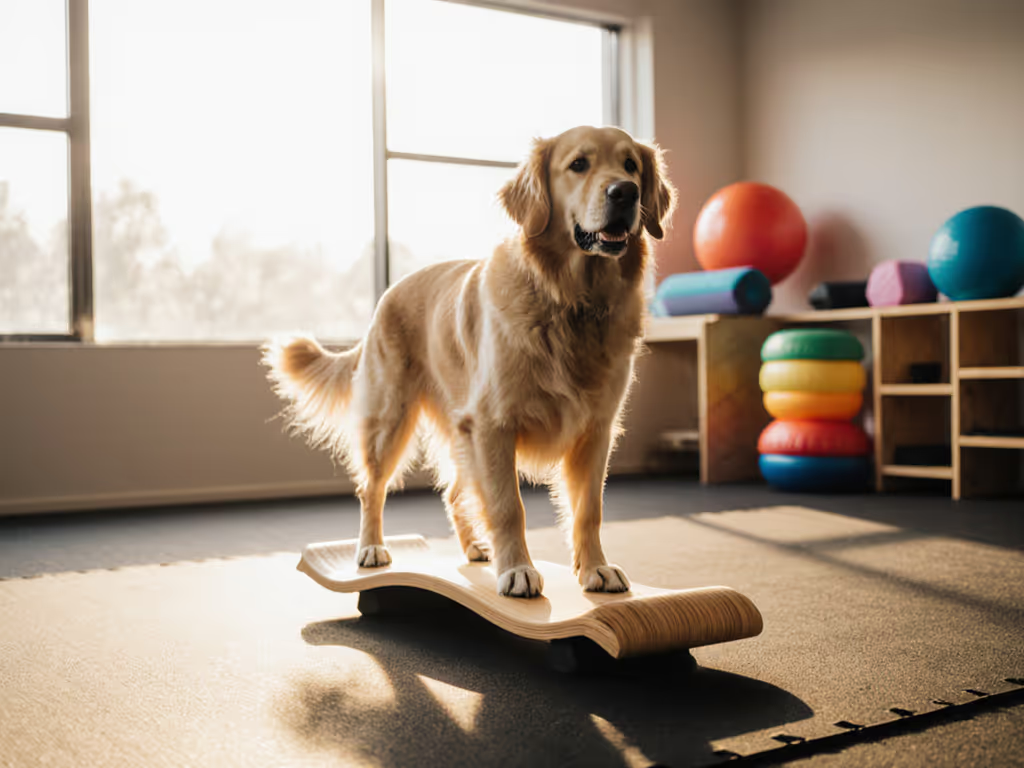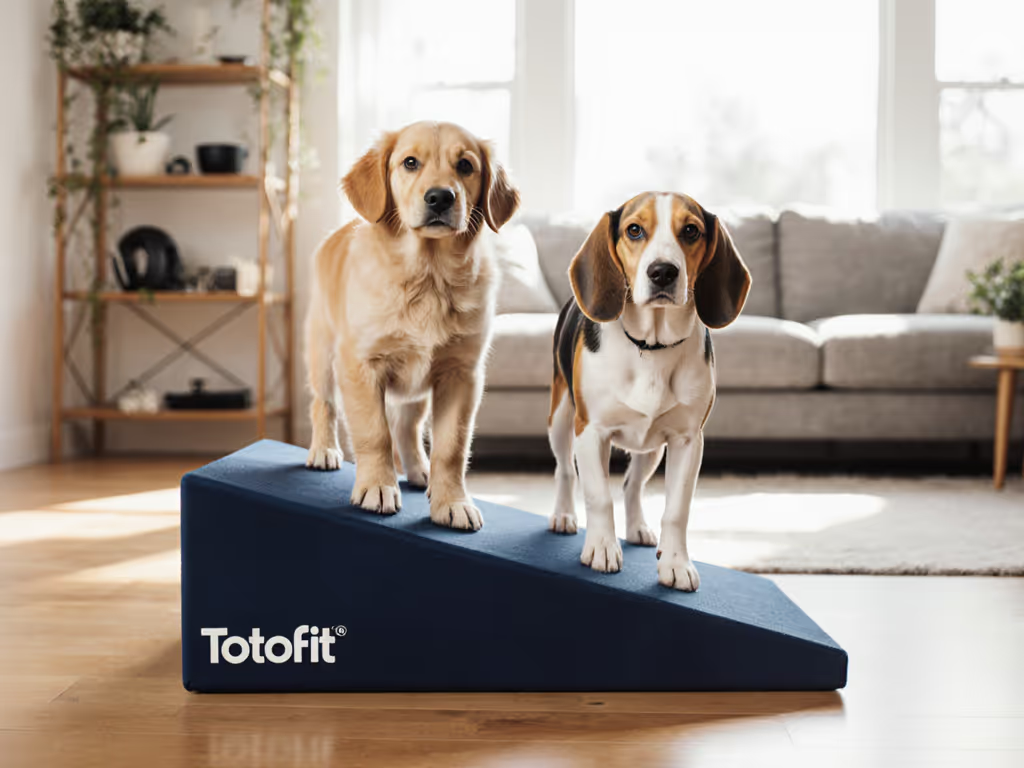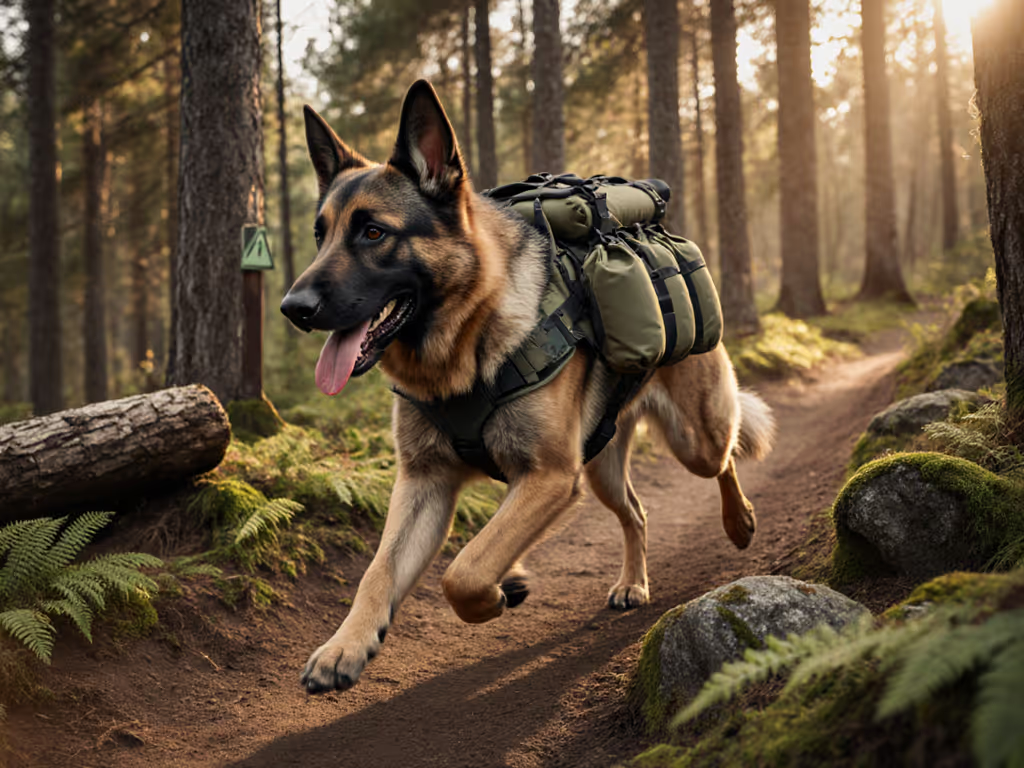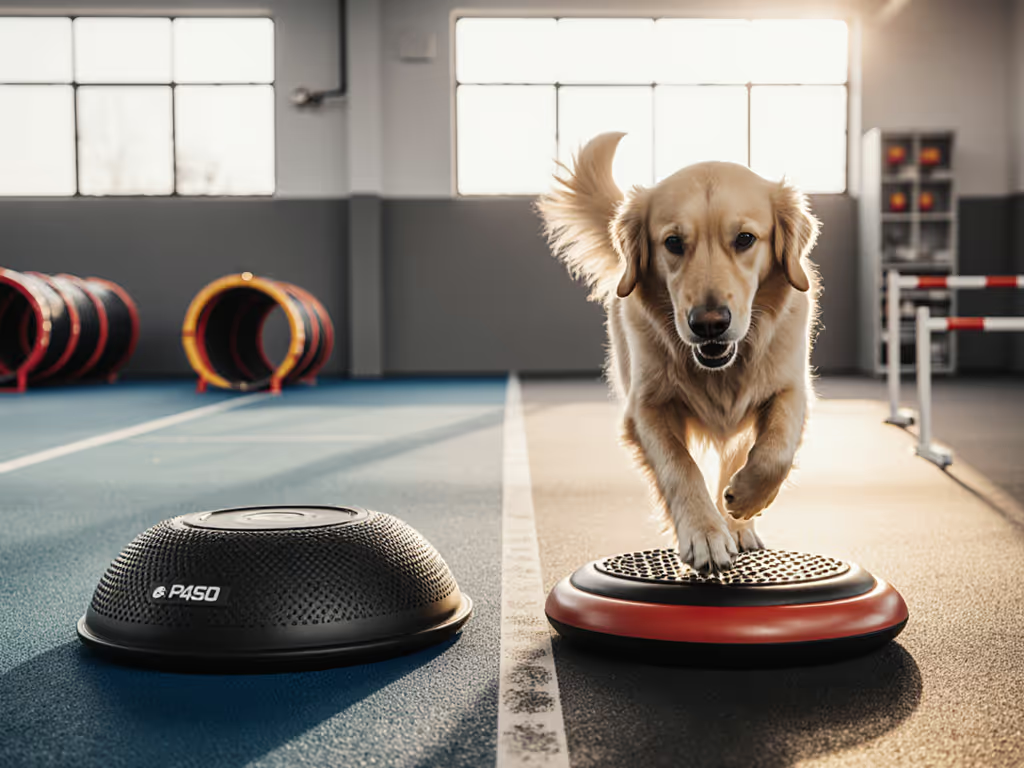
Balance Pads vs Discs: Stable Surface Training for Dogs
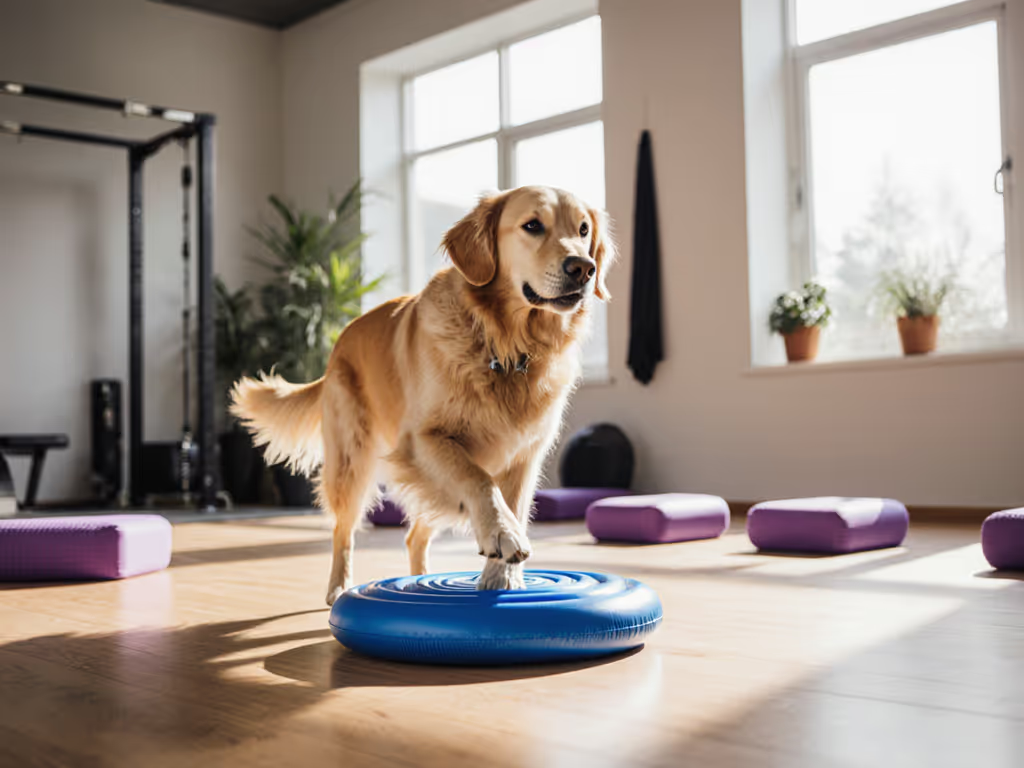
When your dog struggles to find their footing during balance pads vs discs training, or seems hesitant about dog instability training, you're not alone. Many guardians feel overwhelmed trying to navigate the maze of canine fitness tools while seeking that sweet spot between challenge and safety. As a stage-based training specialist, I've seen firsthand how the right surface choice can transform nervous wobbling into confident movement, both indoors and eventually on those anxiety-provoking walks outside. Let's untangle this comparison so you can make an informed choice that builds real confidence, one gentle rep at a time.
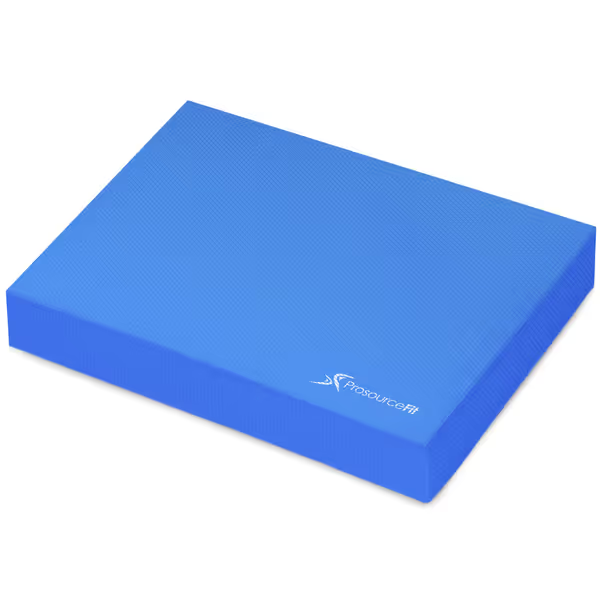
ProsourceFit Exercise Balance Pad
Why Balance Training Matters for Your Dog's Journey
Before we dive into the dog fitness surface comparison, let's acknowledge a truth many guardians feel but rarely voice: watching your dog struggle with basic stability can trigger your own anxiety. That tension travels right down the leash, creating a vicious cycle. Scientifically-backed stability training for dogs does more than strengthen muscles, it rewires neural pathways that help your dog stay calm during real-world challenges like crowded sidewalks or sudden noises. For foundational guidelines on safe conditioning, see our canine fitness basics guide.
A gently worded truth: your dog's balance confidence directly impacts those leash manners you're working so hard to build. As proprioceptive awareness improves, so does your dog's ability to respond to your cues amidst distractions. This isn't just about physical fitness, it is about creating a handler-dog partnership where both ends of the leash feel secure.
Understanding Your Options: Balance Pads vs Discs Demystified
Let's cut through the marketing claims with a practical comparison focused on what actually matters for your training goals. Neither option is "better" universally, it is about matching the tool to your dog's current stage and your specific objectives.
Stability and Movement Dynamics
Balance pads (like many standard foam models) offer what I call "controlled instability." Made from firm closed-cell foam, they provide subtle shifting without dramatic movement. This makes them ideal for:
- Dogs with joint concerns or recovering from injury
- Nervous beginners who shut down with too much movement
- Home environments where space is limited (think that tiny apartment hallway where so many breakthroughs begin)
Balance discs (typically inflatable PVC designs) create dynamic instability that changes with air pressure. They're excellent for:
- Building stronger core activation through constant micro-adjustments
- Dogs who've mastered basic stability and need progression
- Handlers wanting to precisely dial difficulty up or down
"Small wins, stacked safely, build calm, confident teams."
Surface Texture and Traction
This detail matters more than you might think for safe canine balance training. If you're exploring smaller foot pods for targeted paw placement, start with our TotoFit PawPods safety comparison for traction and stability insights. Many discs feature dual-textured surfaces: bumpy on one side for sensory stimulation, smooth on the other for beginners. Pads typically offer consistent traction across their entire surface.
Pro tip for sensitive paws: If your dog hesitates on novel surfaces, start with whichever tool allows all four feet to remain in contact. That constant ground connection builds the initial confidence needed before progressing to more challenging variations.
Practical Considerations for Real Homes
Let's be honest about what matters in daily practice: For a space-smart setup with progression plans, see our adjustable home agility guide.
| Feature | Balance Pads | Balance Discs |
|---|---|---|
| Space needed | Compact footprint | Requires clearance for movement |
| Storage | Stacks flat, tucks under couch | Inflates/deflates; bulkier when stored |
| Setup time | Zero, the moment you take it out | Requires inflation adjustment |
| Multi-dog homes | Easily staged by size | Requires separate inflation for each |
Choosing Based on Your Dog's Current Stage
Here's where most comparisons fall short, they don't connect features to actual training progression. For a full overview of tools and stepwise progressions, check our canine fitness equipment guide. Let me bridge that gap with stage-based guidance.
Stage 1: The Nervous Beginner (Home Only)
If your dog freezes or backs away from novel surfaces:
- Choose: Balance pad
- Why: The predictable, consistent surface reduces cognitive load
- Gentle directive: Place the pad against a wall for added security
- Success marker: Four paws comfortably resting for 15 seconds
Handler posture cue: Stand slightly sideways to your dog, not looming over them
Stage 2: The Wobbly Confident (Home with Distractions)
When your dog steps on willingly but struggles with balance:
- Choose: Balance disc at 50% inflation
- Why: The subtle movement builds strength without overwhelming
- Progression checklist:
- Four paws stationary for 10 seconds
- Weight shifts to front legs while rear stays planted
- Following a treat in smooth circles
- Success marker: Completing 3 full rotations without stepping off
Stage 3: The Ready-for-Real-World (Preparing for Street)
As you approach outdoor transitions, consider:
- Choose: Balance disc near full inflation OR stacking pads for height variation
- Why: Simulates the unpredictable surfaces of sidewalks and trails
- Stress-reduction tip: Practice "find it" games on the surface to build positive associations
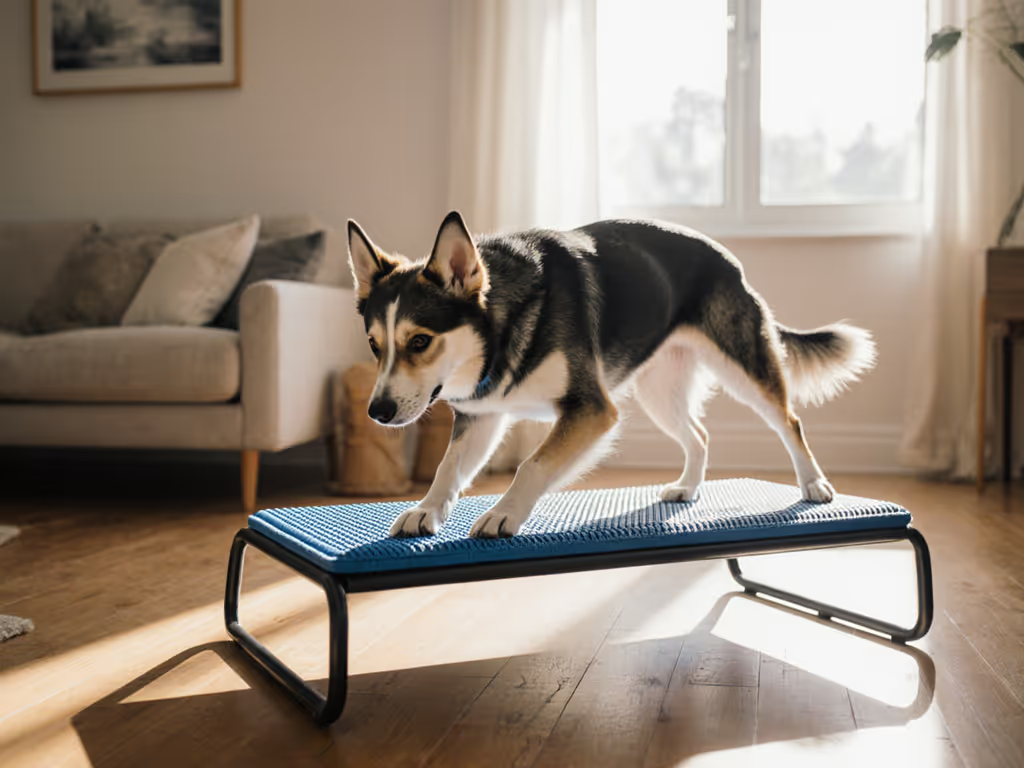
Your First 3-Day Progression Plan
Let's make this actionable with a realistic timeline for time-constrained guardians. Remember our core principle: Short reps, long gains.
Day 1: The Invitation
- Place your chosen surface near your dog's favorite spot
- Toss high-value treats onto (not just near) the surface
- Goal: Three treat retrievals without hesitation
- Max time: 90 seconds total (3 x 30-second sessions)
Day 2: Building Duration
- Add a simple cue: "Step" or "Foot"
- Reward for each second with all paws on
- Introduce gentle weight shifts by moving a treat horizontally (not vertically)
- Goal: 5 seconds of stationary contact
- Max time: 2 minutes total
Day 3: Adding Purpose
- Incorporate into existing routines: Have your dog stand on the surface while you attach the leash
- Practice "wait" while you take 1-2 steps back
- Goal: Completing a familiar cue ("sit," "down") on the surface
- Max time: 3 minutes total
Notice how each stage builds toward real-world application without overwhelming you or your dog. This isn't just isolated exercise, it is laying neural groundwork for those calm street walks you're envisioning.
Avoiding the Most Common Mistake
I've watched countless well-meaning guardians skip ahead too quickly. That apartment hallway success story I mentioned earlier? It didn't happen because we used fancy equipment, it happened because we honored the dog's pace.
The #1 mistake I see: pushing for duration before stability. Your dog's wobbles aren't failure, they are evidence of muscle engagement! Focus on clean repetitions (paws staying on the surface) rather than how long they can stay. Three solid 3-second reps build more confidence than one shaky 10-second attempt.
Connecting to Real-World Walks
Here's where many training programs end but your journey continues. That balance work shouldn't stay confined to your living room, it should prepare you for street transitions. For better control during those first calm walks, review our front-clip vs back-clip harness guide.
Context shift strategy: When your dog reliably stands on their balance surface at home:
- Place it near your front door during leash prep
- Ask for one "step" onto it while wearing their harness
- Gradually move it farther from the door (1 step per session)
This subtle context shift (home to street) builds association between stability practice and actual walks. I've seen dogs who previously lunged at the door transform into calm partners ready for that first block, just like the guardian who cried tears of relief after a ten-step calm walk to her apartment door.
Actionable Next Step: Your 5-Minute Assessment
Today's practical assignment requires nothing but observation:
- Watch your dog navigate three different home surfaces (hard floor, rug, carpet)
- Note where they hesitate or adjust paw placement
- Choose one surface type that presents mild challenge
- Practice one 60-second session of standing still on that surface
- Record one small win in your training journal
This isn't about perfection, it is about gathering data to make your next equipment choice purposeful. Tomorrow, you'll have clearer insight about whether your dog would benefit more from the predictable give of a pad or the dynamic challenge of a disc.
Remember: the goal isn't a circus trick. It's creating the physical confidence that allows your dog to focus on you amid street distractions. Each successful rep (no matter how brief) builds the foundation for calmer walks where both of you can finally enjoy the journey together. That's the power of choosing the right tool for your current stage, not the fanciest option on the shelf.
Short reps, long gains. Your confident walking partnership starts today.

